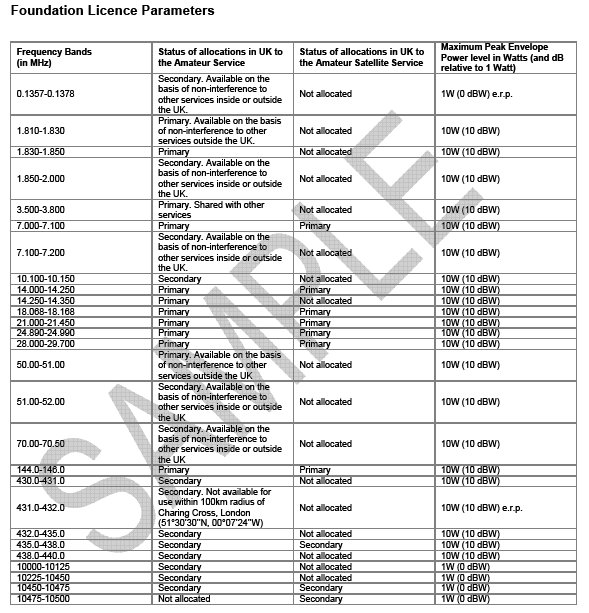
You can then log on to the Ofcom web based licensing system and apply for your licence which enables you to operate on all bands up to 440MHz with up to 10 watts transmit power. It’s marked on the spot so you should have an indicative pass that day, although the formal pass certificate will follow from the RSGB. The course will take two days to complete and at the end there is a twenty five multiple-choice question exam. The BDARS courses are run in a friendly informal atmosphere by experienced radio amateurs. Most of the training is practical but with a bit of theory so you can get the most out of your radio station.ĭon’t be afraid of the thought of having to undertake a training course.

The BDARS Foundation licence training course is an integral part of obtaining a Foundation licence. Before you are allowed to transmit ‘live’ it is important that you know a little bit about how your radio works, the dangers of interfering with other radio users and the licence regulations. This is the entry level, designed to get you involved in amateur radio as quickly as possible.
M6 foundation licence license#
It is NOT a provisional license, and a provisional DR is a poor simile - though I am sure that you remember a time when there was no time limit on a vehicle provisional and you could indeed drive for your whole life on a moped with one! Incidentally, until a few years ago a FL did have certain frequency restrictions but Ofcom removed them.Īs I see it there is a certain lack of logic in your position: if a new FL is OK to transmit within the restrictions of the license, surely he is ALWAYS going to be OK, the license doesn’t decay, and the knowledge that enabled him to pass the FL is more likely to increase rather than decay.In the UK there are three types of licence, giving different levels of privilege. A FL is a license issued as a result of passing the appropriate examination, covering the material deemed to be appropriate to the needs of the FL, who has to operate within certain restrictions. I can’t even see where you are coming from, Walt.

That’s a bit like saying people should be allowed to drive for their whole life on a Provisional driving licence because they only want to ride a moped. You say that a lot of contacts are done on CW so while you are off work why not take the next levels and go for an M0 call lots do it. So if you and others in the SOTA world see me as a bad operator then so be it there is more to this hobby and life than watching a computor screen all day, You mentioned better operator from MM0FMF comments well it was a while ago in one of his past replys about operators he said something else but I cant be bothered to search through all the past threads to find it.

So, let us be calm and analytical or this thread will not survive.īrian G8ADD (wearing his moderator hat - which has big horns sticking out!)Īs you say about the chaser table yes you are correct I have only put in the 12m contacts but what you are not aware of is the fact I stopped puting in chaser contacts some time ago and have only ever used SSB when chasing SOTA so therefore I do not climb the ladder so yes you will pass me very soon as will others.Įverbody get complaints to the council after nearly 30 years I still get them and the latest one is 3 yellow cable ties have been used and they should be black ones, so each time you get new residents move in they want to change the situation reguardless of how long any antennas have been there. Note that the question of power is secondary, anyway: in his opening post Roger highlighted splatter, and that is a symptom of a maladjusted transmitter rather than high power. Of course, all other things are rarely equal: little things like antennas, ground conditions and the ionosphere tend to get in on the act, don’t they? Even a simple wire antenna like the G5RV has multiple lobes on the higher bands, and those lobes exhibit gain, a fact that an operator with nous can take advantage of. Right again?Īgain, all other things being equal, a one kW transmitter has an advantage of 20 dB over a 10 watt transmitter, and that is just over three S-points. Right? That is less than two S-points by the standard that one S-point increase equals 6 dB. Before things start getting too heated and I have to start deleting posts and even closing down a thread - or even with extreme reluctance sending out private warnings, lets look at a few incontrovertible facts.Īll other things being equal, a 100 watt transmitter has a 10 dB advantage over a 10 watt transmitter.


 0 kommentar(er)
0 kommentar(er)
